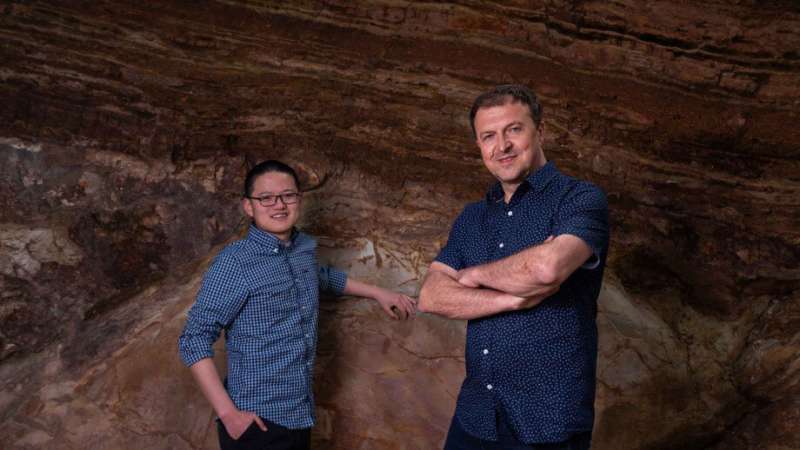How the Earth's core is like a multi-layered cake

How is our Earth's inner core like a cake? According to Professor Hrvoje Tkalčić and Sheng Wang from The Australian National University (ANU), there are more similarities than you might think.
A slice of a classic multi-layered cake like the Croatian "Madarica" (Hungarian Lady) will look vastly different depending on the angle you use to cut it.
Whereas the traditional Chinese mooncake is more uniform—it will look similar no matter how it is sliced.
Professor Tkalčić says just like a good Madarica, the Earth's crust is made up of layers. These layers contain different types of rocks.
"You can imagine how tectonic forces in the Earth's crust strain its layers," Professor Tkalčić said.
"Along with strain, something else is influenced by the structure of these rocks—the speed of seismic waves that travel through them.
"The speed will be different for different types of rocks. But it will also vary in rock of the same composition, depending on the direction the waves travel. Just like it makes a difference which way you slice through your Mađarica."
This concept is also known as anisotropy.
Mr Wang says anisotropy is everywhere, from objects as tiny as bacteria to those as big as our planet.
The inner core of the Earth is no exception—seismologists discovered in the 1980s that it was highly anisotropic for sound waves.
"Anisotropy inside the Earth's inner core is like a record of the Earth's evolution, but it can also offer clues about what will happen in the future," Mr Wang said.
Professor Tkalčić has spent years investigating the Earth's inner core. In 2018, he was able to show the inner core is solid, using a type of wave called "shear waves" that can only travel through solid objects.
This new study takes that work a step further.
"Observing shear waves was difficult, but shear anisotropy proved even harder to study," Professor Tkalčić said.
"We eventually found that shear waves traversing the inner core near its center travel at least five seconds faster on a slanted angle."
"This is significant new information that allows us to examine the solid materials that make up the Earth's inner core since it was formed about a billion years ago.
The study has been published in Geophysical Research Letters.
More information: Sheng Wang et al, Shear‐Wave Anisotropy in the Earth's Inner Core, Geophysical Research Letters (2021). DOI: 10.1029/2021GL094784
Journal information: Geophysical Research Letters
Provided by Australian National University



















